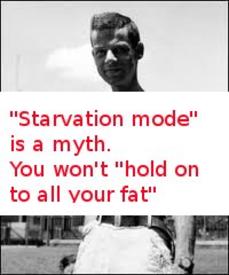Going to ask a silly question about weighing meat
Options
Replies
-
I was trying to help estimate I don't have a food scaleFor every cooked portion you eat that is size of a deck of cards that is 3 oz.
yeah but my steak doesnt come in the shape of a deck of cards..its easier to use my scale :laugh: :drinker:0 -
I use the USDA onine nutrient database (http://ndb.nal.usda.gov/ndb/foods/list)
They list about 20 different Pork Loin numbers depending on whether it's raw or how it's cooked (roasted, braised, etc.). Hope this helps.0 -
P.S. A serving of meat is not 3 oz! That is more of an appetizer! :-)
Lol...I hear ya!!
I just have an old magnent with serving sizes from the gov't & it says this but that's the gov't for you...I probably shouldn't use that chart anymore...lol
LOL thats why I weigh after its cooked0 -
So we are having pork loin steaks today, usually I log anything like this when its cooked but I can't find a good option for it. Scanning the packet it lists it as 'raw as sold'. Does it make any difference logging it as this? Rather than as cooked?
I always weigh as raw and log the calories as such.0 -
I am the chef/owner of a catering company. In the food industry the portion is calulated on a final cooked weight. Your raw weight will lose moisture and fat in the cooking process. So when factoring for, say a 4oz portion of chicken per person, you will likely need to start with a 5oz raw portion. Same with steak. Chopped or ground meats lose more so it might be 6oz to yield a 4oz portion. The only way to get it accurate is to have a food scale to measure the final portion after cooking. If you don't have one and don't want to buy one but want to be conservative, use the raw data. You will always be overestimating in this case.0
-
Providing you have a corresponding food analysis to go with it.The only way to get it accurate is to have a food scale to measure the final portion after cooking.0 -
Thanks for this!I use the USDA onine nutrient database (http://ndb.nal.usda.gov/ndb/foods/list)
They list about 20 different Pork Loin numbers depending on whether it's raw or how it's cooked (roasted, braised, etc.). Hope this helps.0 -
Things weigh different amounts raw and when cooked

Oh I know that but does it mean I should really log it as cooked (weigh it when cooked and try to find the closest option)?
but does it mean I should really log it as cooked (weigh it when cooked and try to find the closest option)?
I weigh all my stuff raw and that's also the way I find it in the food database - for example I weigh out peppers before cooking them raw and log them as Peppers - raw. I do the same for meat
Otherwise you'll be weighing X for your cooked meat but recording it as raw when it really weighed Y when raw, which was more.0 -
Cooking causes some evaporation of juices in the meat. Cooked weight is usually less than raw weight.0
-
I added meats to the database as cooked weight... Because that's how we eat them... cooked. (unless you're one of those people who eat meats raw.)0
Categories
- All Categories
- 1.4M Health, Wellness and Goals
- 392.1K Introduce Yourself
- 43.6K Getting Started
- 259.9K Health and Weight Loss
- 175.7K Food and Nutrition
- 47.4K Recipes
- 232.3K Fitness and Exercise
- 403 Sleep, Mindfulness and Overall Wellness
- 6.4K Goal: Maintaining Weight
- 8.5K Goal: Gaining Weight and Body Building
- 152.8K Motivation and Support
- 7.9K Challenges
- 1.3K Debate Club
- 96.3K Chit-Chat
- 2.5K Fun and Games
- 3.4K MyFitnessPal Information
- 23 News and Announcements
- 998 Feature Suggestions and Ideas
- 2.4K MyFitnessPal Tech Support Questions









